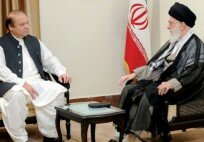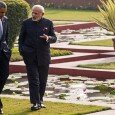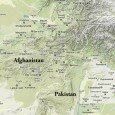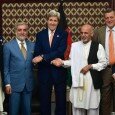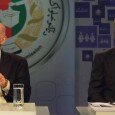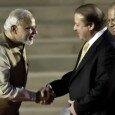Dr Hassan Askari Rizvi :
Indian military’s strategy of engaging Pakistan in a low-intensity conflict on the LOC is counter-productive
The Line of Control (LoC) in Kashmir has experienced more violence in August 2013 than in any single month since India and Pakistan agreed to observe ceasefire in November 2003. There were occasional minor incidents of firing across the LoC which used to be quickly brought under control by the local commanders. Now, in August, the armies of India and Pakistan have engaged in sustained firing across the LoC with the objective of harming each other.
Pakistan offered talks on the violence on the LoC and a one-time contact was established between the Director General of Military Operations of India and Pakistan. However, there was no follow-up and no such contact was established later in August. Pakistan continues to emphasize the need of seeking a peaceful solution of the current incidents on the LoC and other problems between India and Pakistan. Prime Minister Nawaz Sharif declared time and again that conflict and war were not in the interest of Pakistan and India and that they must settle their problems through diplomatic interaction. He has also talked of expanding trade relations.
India’s military and the government are giving no signs of seeking an amicable solution of the clashes between the troops of two countries on the LoC. India’s Foreign Minister is not prepared to commit if the two Prime Ministers would meet in New York when they attend the UN General Assembly session in the last week of September. Nor he or the Defence Minister is giving any indication of using the diplomatic and military channels to defuse the situation in response to Pakistan’s conciliatory gestures. Rather, India’s Defence Minister has directed the Army to respond to Pakistani attacks by all possible means, giving a free hand to the Indian Army’s hawkish top command.
India is pursuing coercive diplomacy on the LoC to build pressure on Pakistan for conceding India’s demands on controlling the activities of militant Islamic groups in Pakistan and stopping what India claims as the increased induction of militant Islamic fighters into Indian-administered Kashmir by the Pakistan Military.
India’s coercive methods have not worked in the past. In December 2001- January 2002 India mobilized its army troops to its border with Pakistan in retaliation to the terrorist attack on Indian Parliament on December 13, 2001 which India blamed on Pakistan.
Indian troops stayed on the Pakistan border until October 2002 when Indian government decided to withdraw them. India could not achieve its agenda against Pakistan even after keeping its troops on the Pakistan border for ten months. After the terrorist attacks in Mumbai in November 2011, India blamed Pakistan for the killings.
India’s military command and others explored different military options to punish Pakistan. The dialogue process was suspended by India. These efforts failed to cow-down Pakistan. Now, in August, India is using its troops to build pressure on the LoC to force Pakistan to accept India’s terms on regional security matters including terrorism.
India’s aggressive policy on the LoC manifests emotionalism and anger rather than a careful and calculated effort to deal with the violent incidents on the LoC that have increased since January 2013. Different political groups in Delhi and other northwestern states of India, mostly Hindu hardliners, are demanding that the Indian military should “teach” a lesson to Pakistan. Some have openly asked for military action. An exhibition of Pakistani paintings was attacked by hardline Hindu activists.
It is foolish to talk of war between India and Pakistan when both sides have nuclear weapons. Any conventional war creates the risk of escalation to a nuclear exchange which can cause devastation for both sides.
The emotionally-charged and hardline Indian response and a demand by a section of public opinion for military action against Pakistan can be explained only with reference to the factors within India
Three Factors
Three factors pertaining to India’s domestic context explain India’s aggressive posture towards Pakistan. It is a dangerous policy of using coercive diplomacy and military posturing against a neighbouring state to serve domestic agenda.
First, the increased electoral competition between the Bhartiya Janata Party (BJP) and the Congress Party of India in view of the forthcoming state election and the general election in 2014 has created a highly charged emotional hysteria in India against Pakistan. The BJP whose leadership had initiated the dialogue process with Pakistan in 2004 has adopted a very hawkish stand and is playing the nationalism card to strengthen its position in the domestic Indian context.
The BJP leadership thinks that their support is on the rise against the Congress Party and if they play up the nationalist card, it will give a boost to them in north and northwestern states of India. Therefore the BJP and its allied Hindu hardline groups, especially the RSS, known for anti-Muslim disposition, have used the incident on the LoC to build pressure on the Congress Party.
The Congress Party’s initial reaction to the incident on the LoC was restrained but as the BJP built an emotional hysteria, it could not hold back and entered the race for demonstrating Indian nationalism and hate for Pakistan. The Congress Youths began to match the BJP and its allies in shouting down Pakistan and asked for military action against Pakistan. The sheer electoral greed in India has made it difficult for the Indian government to respond positively to Pakistan offer of peaceful resolution of problems through negotiations.
Second, the continued tension between India and Pakistan provides the latest evidence of the growing influence of Indian Army on India’s Pakistan policy. The first sign of the Indian Army’s increased role was the stalemate on the Siachen issue. Both sides had agreed in principle to withdraw their troops to the April 1984 positions on the Siachen Glacier. However, the Indian Army argued for authentication of the current position of Indian troops on the Siachen Glacier.
The current positions of the troops of two countries would have been shown on the map for withdrawal but the Indian Army’s demand for formal acceptance of India’s position which it occupied after April 1984 was uncalled for. However, the Indian government adopted the argument of the Indian Army and it raised the matter in the dialogue with Pakistan. This stalemated the Siachen issue in 2006-2007.
Now, the Indian Army has again adopted a tough posture and convinced the Indian government to directly blame Pakistan for the deaths of five Indian soldiers on the LoC. That is the main reason that India’s Defence Minister changed his policy statement in the Parliament on the second day after making the first statement a day earlier which did not directly blame the Pakistan military. It seems that the Indian Army top brass are not in favour of the initiation of the dialogue with Pakistan and they are keeping the situation conflict-oriented on the LoC to subvert the possibilities of revival of the dialogue in the near future. The Congress government lacks the political will to checkmate the informal anti-Pakistan coalition among Indian Army, the BJP and the hardline Hindu groups.
Third, India’s top military and political elite have a strong desire to “thrash” the Pakistan military because they attribute the agitation and protest inside Indian-administered Kashmir to infiltration of militants from Pakistan. There is enough evidence to show that the revolt in Kashmir is an indigenous movement but Indian military circles do not accept this reality.
They have often explored the option of taking military action against Pakistan in a manner that there is no risk of escalation to a nuclear exchange. Therefore, after the Mumbai terrorist incident (November 2011) India’s strategic community talked of a “limited War” or “surgical airstrikes” against what they described as the militant training camps in Pakistan.
India has also toyed with the “Cold Start” doctrine as a punitive military action against Pakistan in a limited area. Pakistan has declared that any military action across the LoC or the international border will be treated as an act of war.
India’s military circles are again talking these options. Any person with a dispassionate understanding of conflicts and war will advise restraint to India. Now, the Indian Army is experimenting with new strategy: keep the Pakistan military engaged on the LoC by low keyed violent incidents over an extended period. This will keep Pakistan under pressure and exclude the chances of any meaningful dialogue between India and Pakistan.
This is a dangerous strategy both in terms of India-Pakistan relations as well as India’s democratic politics. The continued skirmishes on the LoC make the life for Kashmiris more problematic and threaten peace and stability in the region.
Within the Indian domestic context, the continued trouble on the LoC will enable the Indian Army to take the initiative out of the hands of India’s political government. This will adversely affect the role of the political leaders and make them hostage of the Army so far as India’s Pakistan policy is concerned.
It is high time that Indian political leaders stop playing election politics on the issue of relations with Pakistan. They should not yield to the hawkish disposition of hardline Hindu groups and the Indian Army.
The Congress leadership should demonstrate political vision and statesmanship by responding positively to Pakistan’s offer of dialogue. India and Pakistan should activate civilian and military channels for defusing the troubled situation on the LoC and they should return to the dialogue process on all contentious issues.
The writer is a renowned defense and political analyst, based in Lahore.





























































